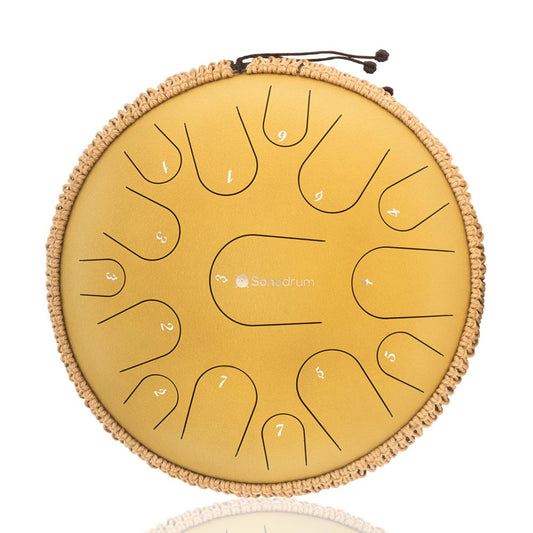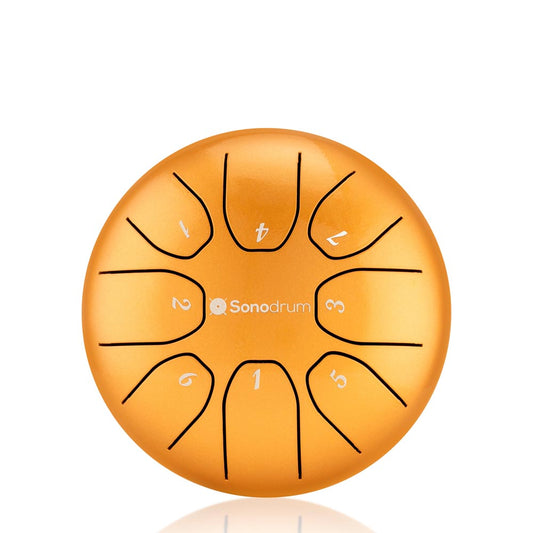Playing the tongue drum can be a profoundly rewarding and meditative experience, but like any musical instrument, it requires a basic understanding of how to read sheet music. Tongue drum music may seem intimidating at first, especially if you're new to music notation, but fear not! In this blog post, we'll guide you through the process of deciphering tongue drum sheet music, helping you unlock the melodic mysteries of this enchanting instrument.
Understanding the Basics of Tongue Drum Sheet Music
- Musical Notation: Tongue drum sheet music is typically written in standard Western musical notation. It consists of a staff with lines and spaces, representing different pitches or notes. The notes themselves are represented by symbols placed on or between these lines and spaces.
-
Treble Clef vs. Bass Clef: Tongue drum music is often notated in the treble clef, which is commonly used for melodic instruments like the tongue drum. The treble clef features a symbol at the beginning of the staff that helps you identify the notes easily. Occasionally, you may encounter tongue drum music written in the bass clef, primarily for lower-pitched tongue drums.
Understanding Tongue Drum Tunings
Before you dive into reading sheet music, it's essential to understand the specific tuning of your tongue drum. Tongue drums come in various tunings, such as pentatonic, diatonic, and chromatic scales, each producing a unique set of notes. Knowing your tongue drum's tuning is crucial because it determines which notes correspond to the tongues on your instrument.
Reading Tongue Drum Notes
Tongue drum notes are represented by letters from the musical alphabet (A, B, C, D, E, F, G). Here's a basic guide to reading tongue drum notes:
-
Letter Names: Each tongue on your drum is labeled with a letter that corresponds to a specific note. For example, the largest tongue may be labeled "C," and the smaller tongues to the right or left of it may follow the alphabetical sequence.
-
Octave: Tongue drums often have multiple tongues with the same letter name but different octaves. Higher octaves are notated with apostrophes (') or numbers (e.g., C4, C5). The higher the number, the higher the octave.
-
Duration: Notes on the tongue drum sheet music have different shapes to represent their duration. Common note types include whole notes, half notes, quarter notes, and eighth notes, each indicating how long to hold the note.
-
Rests: Rests are also essential symbols in tongue drum music. They represent periods of silence or breaks between notes.
-
Time Signature: The time signature at the beginning of the music tells you how many beats are in each measure and which note receives one beat. Common time signatures for tongue drum music are 4/4 and 3/4.
Practice and Patience
As with any musical instrument, reading tongue drum music requires practice and patience. Start with simple melodies and gradually work your way up to more complex compositions. Here are some tips to help you along the way:
-
Practice Regularly: Consistent practice is key to improving your ability to read and play tongue drum music.
-
Learn Scales: Familiarize yourself with the scales used in your tongue drum's tuning. This will help you identify the notes more quickly.
-
Play Along with Recordings: Listening to recordings of tongue drum music can help you understand how the music should sound and how the sheet music corresponds to the instrument.
-
Seek Guidance: If you're struggling with reading tongue drum music, consider taking lessons or seeking guidance from experienced tongue drum players.
Conclusion
Learning to read tongue drum music may seem daunting at first, but with dedication and practice, you can unlock the melodic mysteries of this enchanting instrument. Remember to start with the basics, understand your tongue drum's tuning, and take your time to grasp the fundamentals of musical notation. Soon, you'll be able to interpret sheet music and bring beautiful melodies to life on your tongue drum, opening up a world of musical possibilities.




